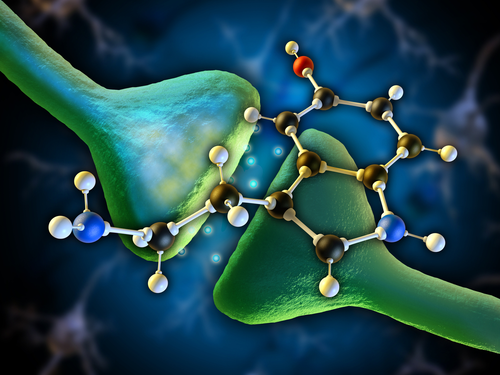Net Change Theorem
Solved Problems
Example 5.
An initially empty swimming pool is being filled by water. The rate at which the height of water changes is given by the equation \[\frac{{dH}}{{dt}} = 2 - \sqrt t ,\] where \(H\) is measured in meters, and \(t\) is measured in hours. Calculate the maximum height of water.
Solution.
Determine the time \(T\) it takes to fill the pool.
Using the net change theorem we find the maximum height:
Example 6.
The growth rate of a vegetable on a field linearly depends on temperature according to the law \[g\left( T \right) = 2\left( {T - 10} \right),\] where \({g\left( T \right)}\) is measured in kg per hour and \(T \ge 15^{\circ}C.\) The hourly temperature varies as follows: \[T\left( t \right) = 20 + 5\sin \frac{{\pi t}}{{12}}.\] Find the total growth of the vegetables (in kg) for the \(12-\text{hour}\) period.
Solution.

By substituting \(T\left( t \right)\) into the equation for \(g\left( T \right)\) we obtain the growth rate as an explicit function of time \(t:\)
Integrating over the \(12-\text{hour}\) period yields:
Example 7.
The relative output power of solar panels decreases with increasing temperature. Suppose that the relative power output is determined by the function \[P\left( T \right) = 100 + \frac{1}{2}\left( {25 - T} \right),\] where \(P\left( T \right)\) is measured in percent and temperature \(T\) is measured in \({^{\circ}C}.\) The temperature varies during a month according to the law \[T\left( t \right) = 15 + 10\sin \frac{{\pi t}}{{30}},\] where \(t\) is measured in days. What is the average power output of the solar panel?
Solution.

First we write the relative power output as a function of time \(t:\)
Integrating the power over the period of \(1\) month gives us the total energy produced for the period. The average power value is equal to the energy divided by the duration of the time interval. Hence,
Example 8.
A radioactive material decays according to the law \[N\left( t \right) = {N_0}{e^{ - \lambda t}},\] where \(N\left( t \right)\) is the amount of the radioactive material at time \(t,\) \({N_0}\) is the initial amount at time \(t = 0,\) \(\lambda\) is the rate of decay. Calculate the cumulative exposure to radiation for all time and for the period of \(T = n{T_{1/2}},\) where \({T_{1/2}}\) is the half life time of the radioactive element and \(n\) is an arbitrary positive number.
Solution.
We assume that the absorbed dose of radiation \(R\left( t \right)\) is proportional to the amount of radioactive material:
where \({R_0}\) is the initial rate of radiation absorption.
The total amount of absorbed dose is given by the improper integral:
Let's now determine the amount of absorbed dose of radiation for the period of \({nT_{1/2}}.\) The half life time \({T_{1/2}}\) is defined from the condition:
It follows from here that
Integrating from \(t = 0\) to \(t = nT_{1/2}\) yields
Thus, at the moment equal to half life time, the cumulative absorbed dose is \(\frac{1}{2}\) of the total amount. At time \(2{T_{1/2}},\) the absorbed dose is already \(\frac{3}{4}\) of the total amount, etc.
This pattern is typical for any processes described by the exponential decay function.
Example 9.
Oil leaks from a tank at a rate of \[r\left( t \right) = {r_0}{e^{ - \lambda t}},\] where \(\lambda = 1\) cubic meters per hour. During the \(1\text{st}\) hour, \({R_1} = 3\,{\text{m}^3}\) of oil has leaked out. How much oil will leak out during the next hour?
Solution.
Using the net change theorem, we can write \({R_1}\) in the form
Similarly, we can express the volume of leaked oil for the \(2\text{nd}\) hour \({R_2}:\)
It then follows that
Therefore the value of \({R_2}\) is equal to
Example 10.
Suppose a hormone production rate during a day is given by the cyclic function \[p\left( t \right) = 1 + \sin \frac{{\pi t}}{{12}}\] for \(0 \le t \le 24.\) The removal rate of the hormone is described by the linear function \[q\left( t \right) = \frac{t}{{12}}.\] Find the highest hormone level over the period.
Solution.

We can make sure that the net change in hormone level over the \(24-\)hour interval is equal to zero:
where \(P\) and \(Q\) denote the total amount of the hormone, respectively, produced and removed for the period.
Now let's derive the expression for the hormone level \(H\) at an arbitrary time \(T,\) where \({0 \le T \le 24}.\) Using the net change theorem, we have
The hormone level \(H\) is maximal when
Although this equation is nonlinear, we can notice that \(t = 12\) is its solution. The total rate \(p\left( t \right) - q\left( t \right)\) changes sign from positive to negative at this point. Therefore the hormone level \(H\) reaches the maximum value at \(t = 12.\)
The maximum concentration of the hormone is equal to